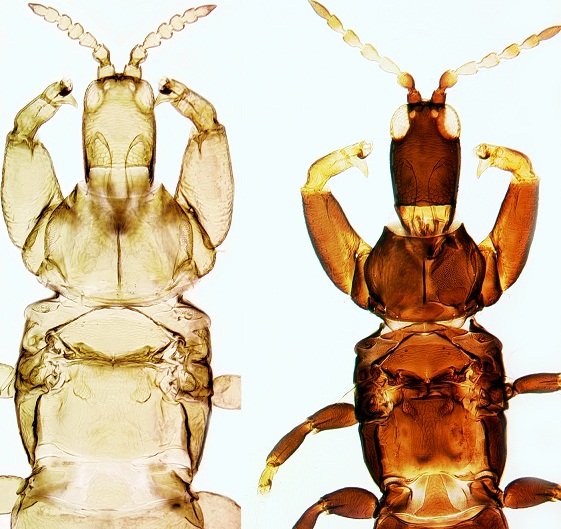By Kim Pullen – Australian National Insect Collection
Inland Australia is a harsh place to live. With daytime temperatures cruel and radiation-intense, dehydration is a constant threat.
Many insects cope with these conditions by only coming out at night or after rain, when humidity is high. Rain also makes desert plants put on new growth, and herbivorous insects respond with rapid development to take advantage of the fresh foliage.
Thrips galls distort the leaves of a wattle
Arid zone wattles such as Mulga are host to a whole suite of native thrips that form galls on the leaves. A gall starts when the plant reacts to feeding by the thrips, producing abnormal tissue that extends out from the leaf surface and eventually encloses the insects. Other thrips glue two leaves together with a secretion from the rear end, and live in the enclosed space.
The interior of both types of enclosure is a benign environment, out of the sun and drying wind. It provides not only shelter, but food in the form of sap from surrounding tissue, and a nursery to rear young. It is so benign that other thrips want to move in too. Some do so quietly, seemingly without disturbing the legitimate owners.
But not all is peace and calm. Competition between thrips females for good leaves is intense, such that they have evolved Schwarzenegger-like ‘arms’ that they use to fight off rivals.
Hey Mum, check out my guns! These two Acacia thrips are mother and daughter. The daugher (left) is a ‘soldier’ tasked with protecting the family home from invaders
And these rivals are not only of their own species: some thrips species can’t even produce their own shelters – they survive entirely by invading others’ homes and killing the occupants. To help defend their home, some of the original female gall-former’s progeny, both male and female, develop as ‘soldiers’ whose job is to dispatch invaders, which they grasp and stab with their giant front legs.
Life can be tough in the outback – harsh outside the home and dangerous inside.



